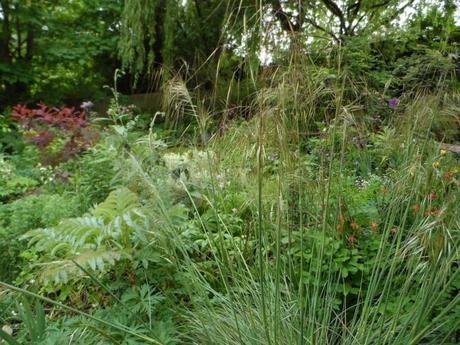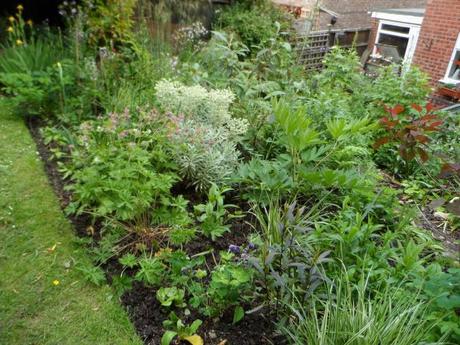 Sometimes you happen upon a speaker or hear a talk which causes you to have one of those light bulb moment. Such an occurrence happened this weekend at the Alpine Garden Society annual conference in Stratford. The majority of the speakers talked about a particular genus – who knew there were so many species of Meconopsis about particularly parts of the world. For me the speaker of the conference was Keith Wiley who gardens with his wife at Wildside in Devon.
Sometimes you happen upon a speaker or hear a talk which causes you to have one of those light bulb moment. Such an occurrence happened this weekend at the Alpine Garden Society annual conference in Stratford. The majority of the speakers talked about a particular genus – who knew there were so many species of Meconopsis about particularly parts of the world. For me the speaker of the conference was Keith Wiley who gardens with his wife at Wildside in Devon.
I have known of Keith for some years now and the whole time my youngest was a student at Plymouth University I tried to visit his garden but its openings never coincided with my visits to the area and sadly it will be closed next year. I have seen his work at The Garden House and read his book Gardening on the Wild Side. I knew that he had created vast ravines in his new garden but I had never really understood the reasoning why.
Keith’s talk was about a broader view of the woodland border. Oh good thought I, lots of nice ferns, epimediums and erythroniums which will make a nice change to all the cushion and scree loving plants in the talks so far. However, Keith’s talk was more than that, it was about creating an environment to grow ‘woodland’ plants and how you do this when you are presented with a flat field with no trees and you have a love of many woodland plants. The solution is to create the hills and troughs, banks and ravines that many of us saw him building on The Landscape Man and now it makes sense. By taking this approach Keith has created borders which face north, south, east and west and by planting trees and shrubs on the tops of the mounds and banks he is creating shade. As he explained woodland plants don’t need to grow under the tree canopy just in the shade created by the trees and shrubs.
As many know I have a sloping garden. It probably slopes at 45 degrees. I am so used to it the slope doesn’t bother me to work on but I do struggle with how the plant it and achieve the best results. I have never yearned for a flat garden but I have to admit having a garden sloping up from the house has, and continues, to challenge me. Sometimes I almost feel paralysed by the borders and this leaves to dithering and inertia and dis-satisfaction in the result.

So what has changed? Well Keith talked about mirroring nature in the borders and how he used inspiration from sights he had seen around the world and indeed in others gardens to create vignettes and views. Admittedly his vignettes are equal to a substantial size of my garden and when I asked him later what he followed the erythroniums with in his magnolia glade he admitted that the interest in the garden moved to another area. This is a luxury I don’t have, every part of my garden has to work hard to give as much interest as possible but talking with others and looking carefully at Keith’s photos I can see how I can use many of the plants I already have in a better way with the shorter geraniums underplanting the taller and more vase shaped woodlanders such as Maianthemum racemosum. I am also going to think about how I position some of my shrubs in order to create more shaded areas for my favorite woodlanders.
It is interesting as many of Keith’s ideas weren’t particularly revolutionary and I had heard and seen various elements that he was using in various places but somehow it was how he brought it all together, and of course his infectious enthusiasm, that really struck a chord with me. As he said to me when we discussed his talk this morning – slopes give you so much more scope and interest and why would anyone want a flat garden!
So here I am home ready to plan and scheme over the coming winter and learn to love and embrace my garden taking into account how the slope and positioning of taller plants can provide different environments for my favorite plants. Roll on the spring.
*The photos are of the Big Border back in May which actually looking back isn’t too bad and I need to do more looking back at photographs before I make any rash decisions.

